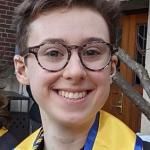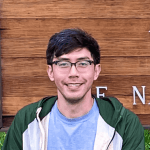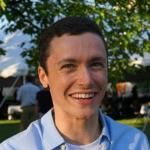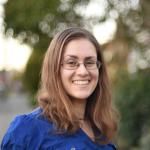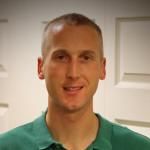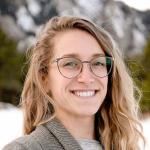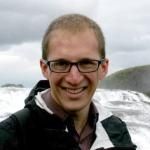Jennifer Kay group
We study clouds, radiation, ice, and coupled climate processes
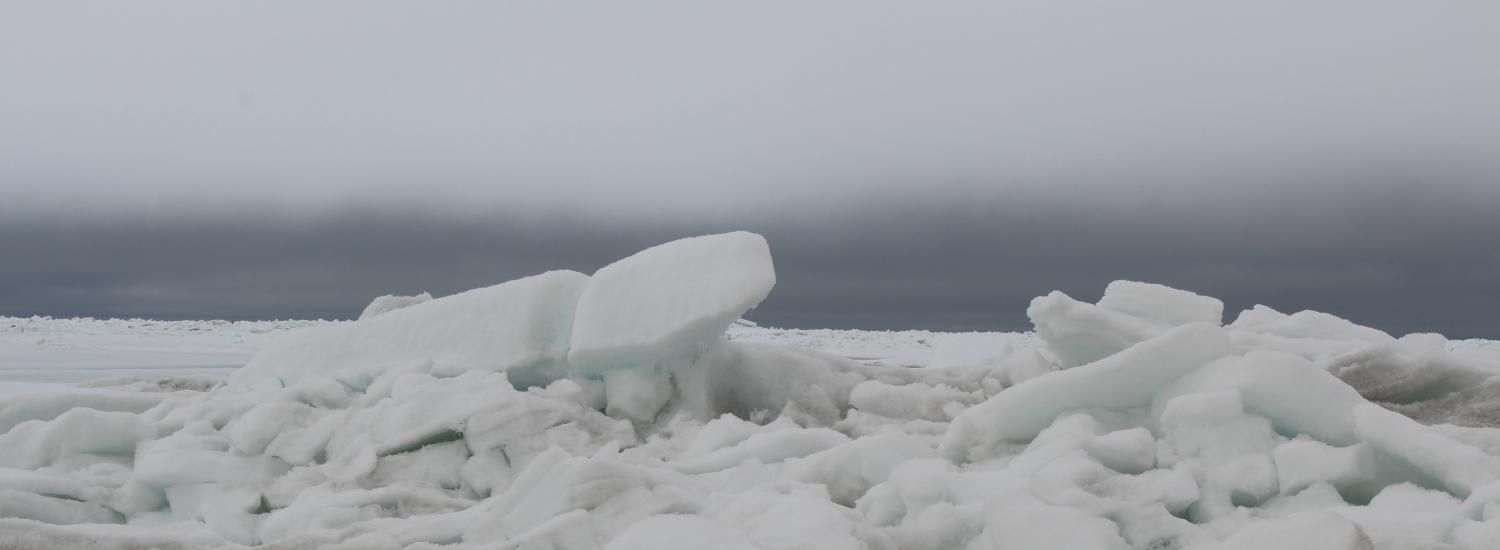
Jennifer Kay group
We study clouds, radiation, ice, and coupled climate processes
Our group's research interests include coupled climate processes, cold clouds and precipitation, sea ice, climate forcing and feedbacks, and internal climate variability. The tools we apply include remote sensing observations, in situ observations, process models, coupled climate models, instrument simulators, and data assimilation. We work with scientists at the National Center for Atmospheric Research (NCAR, also located in Boulder) in the development and analysis of global coupled climate models. We also work with NASA science teams on observing clouds, precipitation, and radiation. We bring together all of these tools to advance our scientific research interests.
I am an Associate Professor in the Department of Atmospheric and Oceanic Sciences (ATOC), a CIRES Fellow and CIRES Associate Director for the Cryospheric and Polar Processes Division, and a visiting scientist at NCAR. My publications are up-to-date on Google Scholar and at Web of Science.
Please be in touch if you are interested in joining us in beautiful Boulder, Colorado.
"The emphasis on observation opens special avenues to discovery. Discoveries, it seems, can be forced to occur in the future, as they often have in the past, by the deliberate making of observations of new phenomena or new frontiers." (from "The Incomplete Guide to the Art of Discovery" by Jack. E. Oliver, Professor Emeritus at Cornell University)
Current and recent research projects, interests, and funding:
1) Coupling between clouds, climate sensitivity, and atmosphere-ocean circulation patterns (NSF CAREER)
2) Observing and modeling coupled Arctic atmosphere-ocean-sea ice processes (NASA CloudSat+CALIPSO)
3) Processes controlling Arctic longwave radiation, energy budgets, and climate (NASA PREFIRE, NASA FINESST)
4) Advanced understanding of 21st century ocean change using climate models and NASA observations (NASA Oceanography)
5) Using a novel circulation-controlled framework to understand drivers of recent and near-future Arctic surface warming (NSF Arctic Natural Sciences)
Research areas, including select papers (*=student or post-doc lead author):
1) Polar climate feedbacks including the cloud influence on and response to Arctic sea ice loss and Arctic warming (Kay et al. 2008; Kay and Gettelman 2009; Kay et al. 2012a; Kay et al. 2016a; *Morrison et al. 2018a, 2018b; Goosse, Kay et al. 2018; *Middlemas et al. 2020, *Arouf et al. 2024)
2) Simulators for evaluation and improvement of modeled clouds and precipitation processes using satellite observations (Kay et al. 2012b; Kay et al 2016b; Guzman et al. 2017; Kay et al. 2018; Medeiros et al. 2023)
3) Coupling between clouds and large-scale atmosphere and ocean circulation patterns (Kay et al. 2016c; *Frey and Kay 2017; *Frey et al. 2017; *Chalmers et al. 2022)
4) Sea ice trends, variability, and predictability in both the Arctic and Antarctic (Kay et al. 2011; Holland et al. 2013; Swart et al. 2015; *Barnhart et al. 2016; Jahn et al. 2016; Kay et al. 2022, Jahn et al. 2024)
5) Large initial condition ensembles to separate internally generated variability and forced climate change (Kay et. al. 2015; Deser et al. 2020; *Maher et al. 2022; *Shaw and Kay 2023, Holland et al. 2024)
Research Tools/Datasets Developed by the Kay Group:
1) CloudSat and CALIPSO spaceborne radar and lidar (cloud fraction dataset, direct link to data). Recently updated by Ph.D. student Leah Bertrand (Bertrand et al. 2024).
2) CFMIP Observational Simulator Package (COSP) in CESM
Authors in italics are students/postdocs.
Revised/Submitted/In Press
Thompson-Munson, M., Kay, J. E., and B. Markle, (submitted), Greenland’s firn responds more to warming than cooling, The Cryosphere, https://egusphere.copernicus.org/preprints/2023/egusphere-2023-2629/
Bushuk, M. et al. and 50+ co-authors including J. E. Kay (in press), Predicting September Arctic Sea Ice: A Multi-Model Seasonal Skill Comparison, BAMS
2024
105) Bertrand, L., Kay, J. E., Haynes, and G. de Boer (2024), A Global Gridded Dataset for Cloud Vertical Structure from combined CloudSat and CALIPSO observations, Earth System Science Data, https://doi.org/10.5194/essd-16-1301-2024
104) Jahn, A., Holland, M. M., and J. E. Kay (2024), Projections of an ice-free Arctic Ocean, Nature Earth and Environment Reviews, https://www.nature.com/articles/s43017-023-00515-9, free version
103) Holland, M. M., Hannay, C., Fasullo, J., Jahn, A., Kay, J. E., Mills, M., Simpson, I., Wieder, W., Lawrence. P., Kluzek, E. and D. Bailey (2024), New model ensemble reveals how forcing uncertainty and model structure alter climate simulated across CMIP generations of the Community Earth System Model, Geoscientific Model Development, https://doi.org/10.5194/gmd-17-1585-2024
102) Bonan, D., Feldl, N., Siler, N., Kay, J. E., Armour, K. C., Eisenman, I., and G. H. Roe (2024) The influence of climate feedbacks on regional hydrological changes under global warming, Geophysical Research Letters, https://doi.org/10.1029/2023GL106648
101) Arouf, A., Chepfer, H., Kay, J. E., L’Ecuyer, T. S., and J. Lac (2024), Surface cloud warming increases as Fall Arctic sea ice cover decreases, Geophysical Research Letters, http://doi.org/10.1029/2023GL105805
100) Clow, G., Lovenduski, N., Levy, M., Lindsay, K. and J. E. Kay (2024), The utility of simulated ocean chlorophyll observations: a case study with the Chlorophyll Observation Simulator Package (version 1) in CESMv2.2, Geoscientific Model Development, https://doi.org/10.5194/gmd-17-975-2024
2023
99) Shaw, J. K., and J. E. Kay (2023), Processes Controlling the Seasonally Varying Emergence of Forced Arctic Longwave Radiation Changes, Journal of Climate, https://doi.org/10.1175/JCLI-D-23-0020.1
98) Medeiros, B., Shaw, J. K., Kay, J. E., and I. Davis (2023), Assessing clouds using satellite observations through three generations of global atmosphere models, Earth and Space Science, https://doi.org/10.1029/2023EA002918
97) Sledd, A., L'Ecuyer, T., Kay, J. E., and M. Steele (2023), Clouds increasingly influence Arctic sea surface temperatures as CO2 rises, Geophysical Research Letters, https://doi.org/10.1029/2023GL102850
2022
Kay, J.E., DeRepentigny, P., Holland, M. M., Bailey, D. A., DuVivier, A. K., Blanchard-Wrigglesworth, E., Deser, C., Jahn, A., Singh, H., Smith, M. M., Webster, M. A., Edwards, J., Lee, S.-S., Rodgers, K. B. and N Rosenbloom (2022), Less surface sea ice melt in the CESM2 improves Arctic sea ice simulation with minimal non-polar climate impacts, Journal of Advances in Modeling Earth Systems, https://doi.org/10.1029/2021MS002679
Chalmers, J., Kay, J. E., Middlemas, E. A., Maroon, E. A., and P. DiNezio (2022), Does disabling cloud radiative feedbacks change spatial patterns of surface greenhouse warming and cooling?, Journal of Climate, 1787–1807, DOI: 10.1175/JCLI-D-21-0391.1
Maher, N., Kay, J. E., and A. Capotondi (2022), Modulation of ENSO Teleconnections over North America by the Pacific Decadal Oscillation, Environmental Research Letters, 18, 114005, DOI 10.1088/1748-9326/ac9327
Schneider, D., Kay, J. E., and C. Hannay (2022), Cloud and surface albedo feedbacks reshape 21st Century warming in successive generations of an Earth System Model, Geophysical Research Letters, 49, e2022GL100653, DOI: 10.1029/2022GL100653
Kim, H., Kang, S. M., Kay, J. E., and S. Xie (2022), Subtropical Clouds Key to Southern Ocean Teleconnections to the Tropical Pacific, Proceedings of the National Academy of Sciences,119 (34) e2200514119, https://www.pnas.org/doi/10.1073/pnas.2200514119
Singh, H, Feldl, N, Kay, J. E., and A. L. Morrison (2022), Climate Sensitivity is Sensitive to Changes in Ocean Heat Transport, Journal of Climate, https://doi.org/10.1175/JCLI-D-21-0674.1
Diamond, M., Gristey, J. J., Kay, J. E. and G. Feingold (2022), Anthropogenic aerosol and cryosphere changes drive Earth’s strong but transient clear-sky hemispheric albedo asymmetry, Commun Earth Environ 3, 206, https://doi.org/10.1038/s43247-022-00546-y. "Behind the paper Blog"
DeRepentigny, P., Jahn, A., Holland, M., Kay, J. E., Fasullo, J., Lamarque, J-F, Tilmes, S., Hannay, C., Mills, M., Bailey D., and A. Barrett (2022), Enhanced simulated early 21st century Arctic sea ice loss due to CMIP6 biomass burning emissions, Science Advances, 8:30, DOI: 10.1126/sciadv.abo2405
Maloney, C., Toon, B., Bardeen, C., Yu, P., Froyd, K. Kay, J., and S. Woods (2022), The balance between heterogeneous and homogeneous nucleation of ice clouds using CAM5/CARMA, Journal of Geophysical Research - Atmospheres, https://doi.org/10.1029/2021JD035540
Zhu, J., Otto-Bliesner, B. L., Brady, E. C., Gettelman, A., Bacmeister, J. T., Neale, R. B., Poulsen, C. J., Shaw, J. K., McGraw, Z. S., and J. E. Kay (2022), LGM paleoclimate constraints inform cloud parameterizations and equilibrium climate sensitivity in CESM2, Journal of Advances in Modeling Earth Systems, https://doi.org/10.1029/2021MS002776
2021
Chemke, R., Polvani, L. M., Kay, J.E., and C. Orbe (2021), Quantifying the role of ocean coupling in Arctic amplification and sea-ice loss over the 21st century, npj Climate and Atmospheric Science, 4, 46 https://doi.org/10.1038/s41612-021-00204-8
Mulmenstadt, J, Salzmann, M., Kay, J.E., Zelinka, M. D., Ma, P., Hornig, S., and J. Quaas, (2021), An underestimated negative cloud feedback from cloud lifetime changes, Nature Climate Change, https://doi.org/10.1038/s41558-021-01038-1. Companion Nature News & Views: The cooling of light rain in a warming world.
L'Ecuyer, T. et al. including J. E. Kay, (2021), The Polar Radiant Energy in the Far InfraRed Experiment: A New Perspective on Polar Longwave Energy Exchanges, Bulletin of the American Meteorological Society, https://doi.org/10.1175/BAMS-D-20-0155.1
Huang, Y., Dong, X., Kay, J.E., Xi, B. and E. McIlhattan, (2021), The climate response to increased cloud liquid water over the Arctic in CESM1: a sensitivity study of Wegener–Bergeron–Findeisen process, Climate Dynamics, https://doi.org/10.1007/s00382-021-05648-5
2020
Kay, J. E. (2020), Early climate models successfully predicted global warming, Nature 578, 45-46 (2020), doi: 10.1038/d41586-020-00243-w
Middlemas, E. A., Kay, J. E., Medeiros, B. M., and E. A. Maroon (2020), Quantifying the influence of cloud radiative feedbacks on Arctic surface warming using cloud locking in an earth system model, Geophysical Research Letters, https://doi.org/10.1029/2020GL089207
Schneider, D., Kay, J. E., and J. Lenaerts (2020), Improved clouds over Southern Ocean amplify Antarctic precipitation response to ozone depletion in an Earth system model, Climate Dynamics, https://doi.org/10.1007/s00382-020-05346-8
McIlhattan, E., Kay, J. E., and T. L'Ecuyer (2020), Arctic Clouds and Precipitation in the Community Earth System Model Version 2, JGR-Atmospheres, https://doi.org/10.1029/2020JD032521
DuVivier, A., Holland, M., Kay, J. E., S. Tilmes, A. Gettelman, and D. Bailey (2020), Arctic and Antarctic sea ice state in the Community Earth System Model Version 2, JGR-Oceans, http://dx.doi.org/10.1029/2019JC015934
Molnar, P., Bitz, C. M., Holland, M. M. Kay, J. E., Penk, S. R., and S. Amstrup (2020), Fasting season length sets temporal limits for global polar bear persistence, Nature Climate Change, https://www.nature.com/articles/s41558-020-0818-9
Danabasoglu, G. and co-authors including Kay, J. E. (2020), The Community Earth System Model version 2 (CESM2), Journal of Advances in Modeling Earth Systems, 12, e2019MS001916. https://doi.org/10.1029/2019MS001916
Deser, C., Lehner, F., Rodgers, K. B., and co-authors including J. E. Kay (2020), Insights from Earth system model initial-condition large ensembles and future prospects, Nature Climate Change, 10, 277–286. https://doi.org/10.1038/s41558-020-0731-2
DuVivier, A., DeRepentigny, P., Holland, M., Webster, M., Kay, J. E., and D. Perovich (2020), Going with the floe: tracking CESM Large Ensemble sea ice in the Arctic provides context for ship-based observations, The Cryosphere, 14, 1259–1271, https://doi.org/10.5194/tc-14-1259-2020.
Lenaerts, J., Camron, M. D., Wyburn-Powell, C. and J. E. Kay, (2020) Present-day and future Greenland Ice Sheet precipitation frequency from satellite observations and an Earth System Model, The Cryosphere, https://doi.org/10.5194/tc-14-2253-2020
2019
Morrison, A. L., Kay, J. E., Frey, W. R., Chepfer, H. and R. Guzman (2019), Cloud Response to Arctic Sea Ice Loss and Implications for Future Feedbacks in the CESM1 Climate Model, 124 (2), 1003-1020, JGR-Atmospheres, https://doi.org/10.1029/2018JD029142
Morrison, A., Rozak, S., Gold, A., and J. E. Kay (2019), Quantifying student engagement in learning about climate change using galvanic hand sensors in a controlled educational setting, Climatic Change, 10.1007/s10584-019-02576-6
Takahashi, H., Lebsock, M., Richardson, M., Marchand, R. and J. E. Kay (2019), When will spaceborne cloud radar detect upward shifts in cloud heights?, JGR-Atmospheres, DOI: 10.1029/2018JD030242
Huang, Y. , Dong, X., Bailey, D., Holland, M., Xi, B., DuVivier, A., J. E. Kay, Landrum L. and Y. Deng (2019), Thicker clouds and accelerated Arctic sea ice decline: The atmosphere-sea ice interactions in spring, Geophysical Research Letters, DOI: 10.1029/2019GL082791
2018
Kay, J. E., L'Ecuyer, T., Pendergrass, A., Chepfer, H., Guzman, R. and V. Yetella (2018), Scale-aware and definition-aware evaluation of modeled near-surface precipitation frequency using CloudSat observations, JGR-Atmospheres, 123:8, 4294-4309, DOI:10.1002/2017JD028213
Goosse, H., Kay, J. E., Armour, K. C., Bodas-Salcedo, A., Chepfer, H., Docquier, D., Jonko, A., Kushner, P. J., Lecomte, O., Massonnet, F., Park, H., Pithan, F., Svensson, G., and M. Vancoppenolle (2018), Quantitative estimation of climate feedbacks in polar regions, Nature Communications, 9, 1919, doi:10.1038/s41467-018-04173-0
Morrison, A. L., Kay, J. E.,, Chepfer, H., Guzman, R. and V. Yettella (2018), Isolating the Liquid Cloud Response to Recent Arctic Sea Ice Variability Using Spaceborne Lidar Observations, JGR-Atmospheres, 123, 473–490, DOI:10.1002/2017JD027248
Maroon, E. A., Kay, J. E., and K. Karnauskas (2018), Influence of the Atlantic meridional overturning circulation on the Northern Hemisphere surface temperature response to radiative forcing, J. Climate, 31:22, 9207-9224, https://doi.org/10.1175/JCLI-D-17-0900.1
Frey, W. R.,and J. E. Kay (2018), The influence of extratropical cloud phase and amount feedbacks on climate sensitivity, Climate Dynamics, DOI: 10.1007/s00382-017-3796-5
Frey, W. R., Morrison, A. L., Kay, J. E., Guzman, R. and H. Chepfer (2018), The combined influence of observed Southern Ocean clouds and sea ice on top-of-atmosphere albedo, JGR-Atmospheres, 123:9, 4461–4475, https://doi.org/10.1029/2018JD028505
Yettella, V., Weiss, J., Kay, J. E., and A. G. Pendergrass (2018), An ensemble covariance framework for quantifying forced climate variability and its time of emergence, J. Climate, 31:10, 4117-4133, https://doi.org/10.1175/JCLI-D-17-0719.1
Miller, N. B. , Shupe, M. D., Lenearts, J. T. M., Kay, J. E., deBoer, G. and R. Bennartz (2018), Process‐Based Model Evaluation Using Surface Energy Budget Observations in Central Greenland, JGR-Atmospheres, 123:10, 4777-4796, https://doi.org/10.1029/2017JD027377
Lacour, A. , Chepfer, H., Miller, N., Shupe, M. Noel, V., Fettweis, X., Gallee, H., Kay, J. E., Guzman, R., and J. Cole (2018), How well are clouds simulated over Greenland in CMIP5 models? Consequences for the surface cloud radiative effect over the ice sheet. J. Climate, 31:22, 9293-9312, https://doi.org/10.1175/JCLI-D-18-0023.1
2017
Frey, W. R., Maroon, E. A., Pendergrass, A. G., and J. E. Kay (2017), Do Southern Ocean cloud feedbacks matter for 21st century warming?, Geophysical Research Letters, DOI:10.1002/2017GL076339
Yettella, V. and J. E. Kay (2017), How will precipitation change in extratropical cyclones as the planet warms?: Insights from a large initial condition climate model ensemble, Climate Dynamics,49: 1765, DOI 10.1007/s00382-016-3410-2
Lacour, A., Chepfer, H., Stone, M., Shupe, M., Miller, N., Noel, V., Kay, J. E., and D. D. Turner (2017), Greenland Clouds Observed in CALIPSO-GOCCP: Comparison with Ground-Based Summit Observations, J. Climate, DOI:http://dx.doi.org/10.1175/JCLI-D-16-0552.1
Guzman, R., H. Chepfer, V. Noel, T. Vaillant de Guélis, J. E. Kay, P. Raberanto, G. Cesana, M. A. Vaughan, and D. M. Winker (2017), Direct atmosphere opacity observations from CALIPSO provide new constraints on cloud-radiation interactions, J. Geophys. Res. Atmos., 122, doi:10.1002/2016JD025946.
Webb, M. J., Andrews, T., Bodas-Salcedo, A., Bony, S., Bretherton, C. S., Chadwick, R., Chepfer, H., Douville, H., Good, P., Kay, J. E., Klein, S. A., Marchand, R., Medeiros, B., Siebesma, A. P., Skinner, C. B., Stevens, B., Tselioudis, G., Tsushima, Y., and Watanabe, M., (2017), The Cloud Feedback Model Intercomparison Project (CFMIP) contribution to CMIP6, Geosci. Model Dev., 10, 359-384, doi:10.5194/gmd-10-359-2017.
2016
Kay, J. E., Wall, C., Yettella, V., Medeiros, B. Hannay, C., P. Caldwell, and C. Bitz (2016), Global climate impacts of fixing the Southern Ocean shortwave radiation bias in the Community Earth System Model, J. Climate, 29:12, 4617–4636, doi:10.1175/JCLI-D-15-0358.1, Correction to Figure 9 units
Kay, J. E., Bourdages, L., Chepfer, H., Miller, N., Morrison, A., Yettella, V., and B. Eaton (2016), Evaluating and improving cloud phase in the Community Atmosphere Model version 5 using spaceborne lidar observations, Journal of Geophysical Research - Atmospheres, 121:8, 4162–4176, DOI: 10.1002/2015JD024699
Kay, J. E., L'Ecuyer, T., Chepfer, H., Loeb, N., Morrison, A. and G. Cesana (2016), Recent advances in Arctic cloud and climate research, Current Climate Change Reports, 2:159, DOI: 10.1007/s40641-016-0051-9
Barnhart, K. R., Miller, C. R., Overeem, I., and J. E. Kay (2016), Mapping the future expansion of Arctic open water, Nature Climate Change, doi:10.1038/nclimate2848, Nature highlight
Jahn, A., Kay, J. E., Holland, M. M. and D. M. Hall (2016), How predictable is the timing of a summer ice-free Arctic?, Geophysical Research Letters, 43, doi: 10.1002/2016GL070067, CU Today article
Palerme, C., Genthon, C., Claud, C., Kay, J. E., Wood, N. B. and T. L'Ecuyer (2016), Evaluation of current and projected Antarctic precipitation in CMIP5 models, Climate Dynamics, DOI 10.1007/s00382-016-3071-1
Stephens, G. L., Haukuba, M. Z., Hawcroft, M., Haywood, J., Behrangi, A, Kay, J. E., and P. J. Webster (2016), The curious nature of the hemispheric symmetry of the Earth's water and energy balances, Current Climate Change Reports, doi:10.1007/s40641-016-0043-9
Favrier, V. et al. including J. E. Kay (2016), Atmospheric drying as the main driver of dramatic glacier wastage in the southern Indian Ocean, Nature Scientific Reports, doi:10.1038/srep32396 CNRS Press Release (in French)
Day, J. et al. including J. E. Kay (2016), The Abisko Polar Prediction School, BAMS, DOI: http://dx.doi.org/10.1175/BAMS-D-16-0119.1
Baker, A. H. et al. including J. E. Kay (2016), Evaluating Lossy Data Compression on Climate Simulation Data within a Large Ensemble, Geoscientific Model Development, 9, 4381-4403, doi:10.5194/gmd-9-4381-2016
2015
Kay, J. E., Deser, C., Phillips, A., Mai, A., Hannay, C., Strand, G., Arblaster, J., Bates, S., Danabasoglu, G., Edwards, J., Holland, M. Kushner, P., Lamarque, J.-F., Lawrence, D., Lindsay, K., Middleton, A., Munoz, E., Neale, R., Oleson, K., Polvani, L., and M. Vertenstein (2015), The Community Earth System Model (CESM) Large Ensemble Project: A Community Resource for Studying Climate Change in the Presence of Internal Climate Variability, Bulletin of the American Meteorological Society, 96, 1333–1349. doi:10.1175/BAMS-D-13-00255.1.
Matus, A. V., L'Ecuyer, T. S., Kay, J. E., Hannay, C. and J-F. Lamarque, 2015: The Role of Clouds in Modulating Global Aerosol Direct Radiative Effects in Spaceborne Active Observations and the Community Earth System Model. J. Climate, 28, 2986–3003. doi: http://dx.doi.org/10.1175/JCLI-D-14-00426.1
Swart, N. C., Fyfe, J. C., Hawkins, E., Kay, J. E., and A. Jahn (2015), Influence of internal variability on Arctic sea-ice trends, Nature Climate Change, 5, 86-89, doi:10.1038/nclimate2483. Press Release Daily Camera Story
2014
Kay, J. E., B. Medeiros, Y.-T. Hwang, A. Gettelman, J. Perket, and M. G. Flanner (2014), Processes controlling Southern Ocean shortwave climate feedbacks in CESM, Geophys. Res. Lett., 41, doi:10.1002/2013GL058315.
English, J. M., Kay, J. E., Gettelman, A., Liu, X., Wang, Y., Zhang, Y. and H. Chepfer (2014), Contributions of clouds, surface albedos, and mixed-phase ice nucleation schemes to Arctic radiation biases in CAM5, J. Climate, doi: http://dx.doi.org/10.1175/JCLI-D-13-00608.1
Palerme, C., Kay, J. E., Genthon, C., L'Ecuyer, T., Wood, N. B., and Claud, C. (2014), How much snow falls on the Antarctic ice sheet?, The Cryosphere, 8, 1577-1587, doi:10.5194/tc-8-1577-2014.
Perket, J., Flanner, M. G. and J. E. Kay (2014), Diagnosing Shortwave Cryosphere Radiative Effect and 21st Century Evolution in CESM, J. Geophys. Res., doi: 10.1002/2013JD021139
Tilmes, S., Lamarque, J.-F., Jahn, A., Kay, J. E. and M. Holland (2014), Can regional climate engineering save the summer Arctic sea ice?, Geophys. Res. Lett., doi: 10.1002/2013GL058731
2013
Kay, J. E. and T. L'Ecuyer (2013), Observational constraints on Arctic Ocean clouds and radiative fluxes during the early 21st century, J. Geophys. Res., 118, doi:10.1002/jgrd.50489.
Brady, E., Otto-Bliesner, B., Kay, J. E., and N. Rosenbloom (2013), Sensitivity to Glacial Forcing in the CCSM4, J. Climate, 26, 1901–1925, doi:http://dx.doi.org/10.1175/JCLI-D-11-00416.1.
Gettelman, A., Kay, J. E., and J. T. Fasullo (2013), Spatial Decomposition of Climate Feedbacks in the Community Earth System Model. J. Climate, 26, 3544–3561, doi:http://dx.doi.org/10.1175/JCLI-D-12-00497.1
Holland, M. M., Blanchard-Wrigglesworth, E., Kay, J., and S. Vavrus (2013), Initial-value predictability of Antarctic sea ice in the Community Climate System Model 3, Geophys Res Lett., 40, 2121–2124, doi:10.1002/grl.50410.
Hurrell, J., Holland, M. M., Gent, P. R , Ghan, S., Kay, J. E., Kushner, P., Lamarque, J-F., Large, W., G., Lawrence, D., Lindsay, K., Lipscomb, W. H., Long, M., Mahowald, N., Marsh, D., Neale, R., Rasch, P., Vavrus, S., Vertenstein, M., Bader, D., Collins, W. D., Hack, J. J., Kiehl, J. and S. Marshall (2013), The Community Earth System Model: A Framework for Collaborative Research, Bull. Amer. Meteor. Soc., doi:http://dx.doi.org/10.1175/BAMS-D-12-00121.1
Meehl, G., Washington, W. M., Arblaster, J. M., Hu, A., Teng, H., Kay, J. E., Gettelman, A., Lawrence, D. M., Sanderson, B. M., and W. G. Strand (2013), Climate change projections in CESM1(CAM5) compared to CCSM4, J. Climate, doi:http://dx.doi.org/10.1175/JCLI-D-12-00572.1
Sand, M., Berntsen, T. K., Kay, J. E., Lamarque, J. F., Seland, Ø., and A. Kirkevåg (2013), The Arctic response to remote and local forcing of black carbon, Atmos. Chem. Phys., 13, 211-224, doi:10.5194/acp-13-211-2013.
2012
Kay, J. E., Holland, M. M., Bitz, C., Blanchard-Wrigglesworth, E.,Gettelman, A., Conley, A., and D. Bailey (2012), The influence of local feedbacks and northward heat transport on the equilibrium Arctic climate response to increased greenhouse gas forcing in coupled climate models, J. Climate, 25, 5433-5450, doi:10.1175/JCLI-D-11-00622.1
Kay, J. E., Hillman, B., Klein, S., Zhang, Y., Medeiros, B., Gettelman, G., Pincus, R., Eaton, B., Boyle, J., Marchand, R. and T. Ackerman (2012), Exposing global cloud biases in the Community Atmosphere Model (CAM) using satellite observations and their corresponding instrument simulators, J. Climate, 25, 5190-5207, doi: http://dx.doi.org/10.1175/JCLI-D-11-00469.1
Cesana, G., Kay, J. E., Chepfer, H., English, J.M., and G. de Boer (2012), Ubiquitous low-level liquid-containing Arctic clouds: New observations and climate model constraints from CALIPSO-GOCCP, Geophys. Res. Lett., 39, L20804, doi:10.1029/2012GL053385.
Gettelman, A., Kay, J. E., and K. Shell (2012), The evolution of climate sensitivity and climate feedbacks in the Community Atmosphere Model, J. Climate, 25, 1453-1469, doi: 10.1175/JCLI-D-11-00197.1
de Boer, G., Chapman, W., Kay, J. E., Medeiros, B., and M. D. Shupe (2012), A characterization of the present-day Arctic atmosphere in CCSM4, J. Climate, 25, 2676–2695, doi: 10.1175/JCLI-D-11-00228.1
Jahn, A., K. Sterling, M.M. Holland, J.E. Kay, J.A. Maslanik, C.M. Bitz, D.A. Bailey, J. Stroeve, E.C. Hunke, W.H. Lipscomb, D.A. Pollak (2012), Late 20th century simulation of Arctic sea ice and ocean properties in the CCSM4, J. Climate, 25:5, 1431-1452, doi: 10.1175/JCLI-D-11-00201.1.
Stroeve, J. C., Serreze, M. C., Holland, M.M., Kay, J. E., Meier, W., and A. P. Barrett (2012), The Arctic's rapidly shrinking sea ice cover: A research synthesis, Climatic Change, 110, 3-4, 1005-1027, doi: 10.1007/s10584-011-0101-1
Bromwich, D. H., Nicolas, J. P., Hines, K., Kay, J. E., Key, E., Lazzara, M., Lubin, D. McFarquhar, G., Adams, N., Gorodetskaya, I., Grosvenor, D. P., Lachlan-Cope, T., and N. Van Lipzig (2012), Tropospheric clouds in Antarctica, Rev. Geophys., 50, RG1004, doi:10.1029/2011RG000363.
Jochum, M., Jahn, A., Peacock, S., Bailey, D., Fasullo, J., Kay, J. E., Levis, S. and B. Otto-Bliesner (2012), True to Milankovitch: Glacial Inception in the new Community Climate System Model, J. Climate, 25:7, 2226-2239, doi: http://dx.doi.org/10.1175/JCLI-D-11-00044.1
Raeder, K., Anderson, J. L., Collins, N., Hoar, T. J., Kay, J. E., Lauritzen, P. H., and R. Pincus (2012), DART/CAM: An Ensemble Data Assimilation System for CESM Atmospheric Models, J. Climate, 25, 6304–6317, doi:http://dx.doi.org/10.1175/JCLI-D-11-00395.1
2011
Kay, J. E., Holland, M. M., and A. Jahn (2011), Inter-annual to multi-decadal Arctic sea ice extent trends in a warming world, Geophys. Res. Lett., 38, L15708, doi:10.1029/2011GL048008 NSF press release, favorite media coverage including the quote "The Arctic's summer ice coverage could hold its ground or even bounce back slightly, even as global average temperatures rise. But like a Guns 'n' Roses tour, the comeback will be short lived and eventually doomed to disappear."
Kay, J. E., Raeder, K., Gettelman, A. and J. Anderson (2011), The boundary layer response to recent Arctic sea ice loss and implications for high-latitude climate feedbacks, J. Climate, 24, 428-447, doi:10.1175/2010JCLI3651.1
Hwang, Y-T., Frierson, D. W., and J. E. Kay (2011), Coupling between Arctic feedbacks and changes in poleward energy transport, Geophys. Res. Lett.,38,L17704, doi:10.1029/2011GL048546
Medeiros, B., Deser, C. ,Tomas, R. A. and J. E. Kay (2011), Arctic inversion strength in climate models, J. Climate, 24, 4733-4740, doi: 10.1175/2011JCLI3968.1
2009
Kay, J. E. and A. Gettelman (2009), Cloud influence on and response to seasonal Arctic sea ice loss, J. Geophys. Res., 114, D18204, doi:10.1029/2009JD011773
Gettelman, A., P. H. Lauritzen, M. Park, and J. E. Kay (2009), Processes regulating short-lived species in the tropical tropopause layer, J. Geophys. Res., 114, D13303, doi:10.1029/2009JD011785
2008
Kay, J. E., L'Ecuyer, T., Gettelman, A., Stephens, G., and C. O'Dell (2008), The contribution of cloud and radiation anomalies to the 2007 Arctic sea ice extent minimum, Geophys. Res. Lett., 35, L08503, doi:10.1029/2008GL033451
Kay, J. E., and R. Wood (2008), Timescale analysis of aerosol sensitivity during homogeneous freezing and implications for upper tropospheric water vapor budgets, Geophys. Res. Lett., 35, L10809, https://doi.org/10.1029/2007GL032628
Pre-2008
Kay, J. E., Baker, M., and D. Hegg (2007), Physical controls on orographic cirrus inhomogeneity. Atmos. Chem. Phys., 7, 3771-3781, doi:10.5194/acp-7-3771-2007.
Kay, J. E., Baker, M., and D. Hegg (2006), Microphysical and dynamical controls on cirrus cloud optical depth distributions, J. Geophys. Res.,111,D24205, doi:10.1029/2005JD006916
Kay, J. E., Kampf, S. K., Handcock, R., Cherkauer, K, Gillespie, A. R., and S. J. Burges (2005), Accuracy of lake and stream temperatures estimated from thermal infrared images, Journal of the American Water Resources Association, 41 (5), 1161-1175.
Kay, J. E., Tsemekhman, V., Larsen, B., Baker, M. and B. Swanson (2003), Comment on evidence for surface initiated homogeneous nucleation, Atmos. Phys. Chem., 3, 1439-1443, doi:10.5194/acp-3-1439-2003
Kay, J. E., Gillespie, A. R., Hansen, G. B., and E. Pettit (2003), Spatial relationships between snow contaminant content, grain size, and surface temperature from multispectral images of Mt. Rainier, Washington (USA), Remote Sensing of Environment, 86:2, 216-231.
Cherkauer, K.A., Burges, S.J. , Handcock, R.N., Kay, J. E., Kampf, S.K. and A.R. Gillespie (2005), Assessing satellite-based thermal-infrared remote-sensing for monitoring Pacific Northwest river temperatures, Journal of the American Water Resources Association, 41 (5), 1149-1160.
Handcock, R.N., Gillespie, A. R., Cherkauer, K. A., Kay, J. E., S. J. Burges, and S. K. Kampf (2005), Assessing satellite-based thermal-infrared remote-sensing for monitoring Pacific Northwest river temperatures, Journal of the American Water Resources Association, 41 (5), 1149-1160.
Simonelli, D. P., Kay, J., Adinolfi, D., Veverka, J., Thomas, P. C., and P. Helfenstein (1999), Phoebe: Albedo map and photometric properties, Icarus, 138, 249-258.
The University of Colorado Boulder is a world leader in climate research. Boulder has multiple climate research centers and amazing collaboration opportunities. Working where the Plains meet the Rockies provides a lot of inspiration. We hope you will consider joining us! Below are current opportunities to join our group. We especially welcome scientists with their own research funding. As always, contact us if you have questions or ideas for collaboration.
For prospective undergraduate students: We would be delighted to have you contribute to our group's research. You should have a strong background in programming/computing/math/science. One option is to write a joint research proposal for the University of Colorado's UROP program. The Kay Group regularly mentors students during summers through Dept. of Atmospheric and Oceanic Sciences Research Experience for Undergraduates (ATOC REU) and through the Research Experience for Community College Students (RECCS).
For prospective graduate students: Please apply to graduate school in ATOC and also consider applying for a fellowship. For example: NSF Graduate Research Fellowship Program, NASA Future Investigators in NASA Earth and Space Science and Technology Fellowship, NOAA Fellowships. Note: Our group is not recruiting new graduate students in 2024.
For prospective postdoctoral research fellows: Demonstrating your ability to pursue and fund independent research is especially important. Please let us know if you have an idea for a joint research proposal. In addition, the following fellowships are highly recommended: CIRES Fellowship, NOAA Climate and Global Change Fellowship, NSF AGS Postdoctoral Fellowship. Note: Our group is not recruiting new postdocs in 2024.
For graduate students already at CU: CIRES Graduate Student Research Award, CU Dissertation Completion Fellowship
- ATOC 5860* - Objective Data Analysis (Spring 2018, Spring 2019, Fall 2020, Spring 2022, Spring 2023, Spring 2024). Application labs in python available on github here.
- ATOC 4500 - Data Science Lab for Undergraduates (Spring 2022)
- ATOC 5600 - Physics and Chemistry of Clouds and Aerosols (Spring 2014, Spring 2016, Spring 2020, planned Spring 2025)
- ATOC 1060 - Our Changing Environment (Fall 2014, Fall 2015, Spring 2017, Fall 2017, Fall 2018, Fall 2019, Fall 2021, Fall 2023)
- ATOC 4875/5875* - Climate Modeling Lab (Fall 2016, planned Fall 2024)
- ATOC 4020 - Undergraduate Professional Development Seminar (last taught Spring 2024)
- ATOC 6020 - Graduate Research Seminar (Offered regularly on topics of interest to all and open to all, have an idea?? Let me know. Spring 2024 focused on Polar Research and Climate Classics)
*=new class developed by and first taught by Prof. Kay for CU Boulder ATOC.
The Kay Group does Education and Outreach with the CIRES Center for Education, Engagement, and Evaluation, Protect Our Winters (POW), the Environmental Law Institute (ELI), and many other inspirational partners.
As part of Kay NSF CAREER award (NSF 1554659, 2016-2022):
We made and are still supporting “data puzzles” for use in classroom teaching in support of NGSS Standards: ESS2.D: Weather and Climate: Data Puzzle: To Reflect or Not To Reflect; Data Puzzle: On a Budget. These two puzzles and others are available here.
We made and supported ten lesson series each tied to NGSS Earth's systems standards for middle and high school teachers on Why might the Arctic be warming faster than the rest of the world?
We made three original videos/podcasts, including filming on site in Churchill, Manitoba in partnership with PBI. These resources been used at multiple universities in support of undergraduate teaching about climate and climate change:
2024 Highlights
- Congratulations to ATOC Ph.D. Candidates and Kay Group members Jonah Shaw and Megan Thompson-Munson who each won an Outstanding Student Presentation Award (OSPA) at the Fall 2023 AGU Meeting! We are so proud of you both for this recognition!
- ATOC Ph.D. Candidate and Kay group member Leah Bertrand published in Earth System Science Data - A global gridded dataset for cloud vertical structure from combined CloudSat and CALIPSO observations. Congrats Leah!
- ATOC Ph.D. Candidate and Kay group member (co-advised, Nikki Lovenduski primary advisor) Genevieve Clow published in Geoscientific Model Development - The utility of simulated ocean chlorophyll observations: a case study with the Chlorophyll Observation Simulator Package (version 1) in CESMv2.2. Congrats Genevieve!
2023 Highlights
- ATOC Ph.D. Candidate and Kay group member Jonah Shaw published in Journal of Climate - Processes Controlling the Seasonally Varying Emergence of Forced Arctic Longwave Radiation Changes. Congrats Jonah!
- Dr. Yue Dong will join us in September 2023 as a CIRES Research Scientist to work on our newly funded NASA Oceanography proposal. Welcome Yue!
- Dr. Arianna 'Ari' Varoulo-Clarke will join us in September 2023 as a NOAA Climate and Global Change Postdoctoral Fellow. Congratulations and Welcome Ari!
- This August through October, Gabriella Wallentin (PhD Student in Cloud Physics in the group of Prof. Dr. Corinna Hoose) is visiting us from the Karlsruhe Institute of Technology (KIT) in Germany. Welcome Gabriella!
- We welcomed two researchers this summer: Ryan Haas a meteorology major from the University of Miami through the ATOC REU and Ethan Glenn who recently graduated with an Associate of Science from Northeastern Junior College through RECCS. Welcome Ryan and Ethan!
- During May 15-18, we went to the Rocky Mountain Biological Laboratory to visit the SPLASH (Study of Precipitation, the Lower Atmosphere and Surface for Hydrometeorology) and SAIL (Surface Atmosphere Integrated Field Laboratory) field campaigns hosted by CIRES/CU scientist Dr. Gijs deBoer and NOAA scientist Dr. Joe Sedlar. Along with Denver's 9News, CIRES News also produced a story/podcast highlighting the trip's goal of helping students bridge from field observations to models.
- ATOC Ph.D. Candidate and Kay group member Megan was awarded a CIRES Graduate Student Researcher Award for her project Characterizing the Response of Firn to Climate Change. Congrats Megan!
2022 Highlights
- Kay group member Dr. Nicola Maher received a 2023 Australian Research Council (ARC) Discovery Early Career Research Award (DECRA) for her project How will Pacific climate variability impact Australia in a warming world? Congratulations Nicola!
- Congratulations to Sydney Kramer (CU ATOC/Data Science Undergraduate '23) for submitting her very first conference abstract to the 103rd American Meteorological Society meeting to be held in Denver January 8-12, 2023. The theme of the meeting "Data: Driving Science. Informing Decisions. Enriching Humanity" is a perfect match to her abstract title: Investigating High Plains seasonality along a North-South transect in a warming world.
- ATOC Ph.D. Candidate and Kay group member Ash Gilbert received the NSF GRFP Fellowship. Congratulations Ash!
- ATOC Ph.D. Candidate and Kay/Lovenduski group member Genevieve Clow received the NSF GRFP Fellowship. Congratulations Genevieve!
- ATOC Ph.D. Candidate and Kay group member Jonah Shaw received the NASA FINESST Fellowship. Congratulations Jonah!
- Lydia/Ash Gilbert joins the Kay group as an ATOC/CIRES Ph.D. student. Welcome Ash!
- Megan Thompson-Munson joins the Kay group as an ATOC/CIRES Ph.D. student. Welcome Megan!
- Summer 2022 = many long-planned meetings! International Radiation Symposium 2022 (originally 2020) and the Cloud Feedbacks Model Intercomparison Project (One of the first MIPs!) in Seattle (also originally 2020). Jonah also will go to the AMS Collective Meeting in Madison. We are busy and taking it all in and feeling fortunate for in-person science this summer.
- We welcome two undergraduate researchers this summer: Nayeli Gurrola who is a statistics major at the University of Texas Rio Grande Valley and Sydney Crandall who is a ATOC/Data Science major at CU. Welcome Nayeli and Sydney!
- Jen led a paper published in Journal of Advances in Modeling Earth Systems: Less surface sea ice melt in the CESM2 improves Arctic sea ice simulation with minimal non-polar climate impacts.
- Former Kay Group member and CU Class of 2020 Jason Chalmers published in J. Climate: Does disabling cloud radiative feedbacks change spatial patterns of surface greenhouse warming and cooling? Congrats Jason!!
2021 Highlights
- Genevieve Clow joins the Kay group as an ATOC/CIRES Ph.D. student, co-advised with Prof. Nikki Lovenduski in ATOC/INSTAAR. Welcome Genevieve!!
- Will Bertrand joins the Kay group as an ATOC/CIRES Ph.D. student. Welcome Will!
- Sean Leister joins the Kay group as an ATOC/CIRES Ph.D. student. Welcome Sean!
- We welcome two researchers virtually this summer: Renato Barrera who is an undergraduate at the University of Texas Rio Grande Valley and Brandon Molina who will join ATOC as a Ph.D. student in Fall 2021. Welcome Brandon and Renato!
- Michael Diamond joins CIRES as a postdoctoral fellow working with Graham Feingold (NOAA) and with us. Welcome Michael!
- Jen was on sabbatical in Spring 2021.
2020 Highlights
- Due to the pandemic, the CFMIP community held a virtual meeting that included an invited review talk by Jen in the session on "Do extratropical cloud feedbacks matter for climate?". Watch it here. All papers for the talk are available here.
- Nicola Maher joins the Kay group as a CIRES Postdoctoral Visiting Fellow in November. Welcome Nicola!
- Jonah Shaw joins the Kay group as an ATOC/CIRES Ph.D. student in August. Welcome Jonah!
- CIRES Postdoc Eleanor Middlemas published in Geophysical Research Letters: Quantifying the Influence of Cloud Radiative Feedbacks on Arctic Surface Warming Using Cloud Locking in an Earth System Model. Congrats Eleanor!!
- Congratulations to Kay Group Member Dr. Eleanor Middlemas for winning the 2019 F.G. Walton Smith Prize for outstanding Ph.D. Dissertation at the University of Miami!
- Anna Pinckney joins Kay group for summer research on Southern Ocean Clouds and Precipitation. Welcome Anna!
- Fernanda Marcello de Oliveria from the University of Sao Paulo (Brazil) visits us to collaborate on Southern Ocean research in February. Welcome Fernanda!
- Jen's Nature News and Views on the success of early climate models in predicting subsequently observed global warming is now online.
- Teresa Vogl from the Leipzig University (Germany) visits us to research clouds (primarily using radar data) from January through early March. Welcome Teresa!
2019 Highlights
- Congrats to Dr. Ariel Morrison on her publication "Quantifying student engagement in learning about climate change using galvanic hand sensors in a controlled educational setting" recently published in Climatic Change here!
- During summer, we are delighted to welcome Professor Alan Robock (Rutgers University) and Hsing-Hung Chou (National Taiwan University) to visit and collaborate with us.
- Kay group member Ariel Morrison graduates with her Ph.D.!! A copy of her dissertation is available here: Engaging in Climate Change: Arctic cloud-sea ice feedbacks in observations, climate models and the classroom. Congratulations Dr. Morrison. We are very proud of you!!
- Jason Chalmers' UROP grant for this summer entitled "Linearity of cloud feedbacks in idealized climate models" has been funded. Congratulations Jason!
- Jacopo Sala from the University of Milano Bicocca is visiting us to research Arctic Amplification in observations and large initial condition ensembles. Benvenuto/Welcome Jacopo!
- Kay group member Ariel Morrison awarded an Outstanding Student Presentation Award for her invited oral presentation entitled "Cloud Response to Arctic Sea Ice Loss and Implications for Future Feedbacks in the CESM1 Climate Model” at the 2018 Fall AGU. Congratulations Ariel!
- Eleanor Middlemas joins Kay group as a CIRES Postdoctoral Visiting Fellow. Welcome Eleanor!
2018 Highlights
- Jen gave the first Turco Lecture at AGU - 9-10 am on Thursday December 13 Marriot Marquis - Marquis 5 Washington, DC.
- ATOC Ph.D. Candidate and Kay group member Ariel Morrison published in JGR-Atmospheres: Cloud Response to Arctic Sea Ice Loss and Implications for Future Feedbacks in the CESM1. Congrats Ariel!!
- Kay group member Vineel Yettella successfully defends his Ph.D.!! A copy of his dissertation is available here: The Role of Internal Variability in Climate Change Projections Within an Initial Condition Climate Model Ensemble. Congratulations Dr. Yettella - We are very proud of you!!
- CIRES Postdoc Elizabeth Maroon published in Journal of Climate: Influence of the Atlantic meridional overturning circulation on the Northern Hemisphere surface temperature response to radiative forcing. Congrats Elizabeth!!
- With colleagues, Jen and CIRES Postdoc/Kay group member Elizabeth Maroon organized a polar modeling workshop for early career scientists. The workshop website has the details!
- Jason Chalmers (CU-Boulder) and Susannah Rozak (Pikes Peak Community College) joined us for the summer as undergraduate researchers funded through the National Science Foundation (NSF) Research Experience for Undergraduates (REU) program. Their progress and energy inspired us all!!
- Kay group member Bill Frey successfully defends his Ph.D.!! A copy of his dissertation is available here: The influence of Southern Ocean shortwave cloud feedbacks on the coupled climate system. Congratulations Dr. Frey - We are very proud of you!!
- Stockholm University Research Scientist and Kay group member Joe Sedlar published in Journal of Climate: Spring Arctic Atmospheric Preconditioning: Do Not Rule Out Shortwave Radiation Just Yet. Congrats Joe!!
- ATOC Ph.D. Candidate and Kay group member Bill Frey published in JGR-Atmospheres: The combined influence of observed Southern Ocean clouds and sea ice on top‐of‐atmosphere albedo. Congrats Bill!!
- ATOC Ph.D. Candidate and Kay group member Vineel Yettella published in Journal of Climate: An ensemble covariance framework for quantifying forced climate variability and its time of emergence. Congrats Vineel!!
- ATOC Ph.D. Candidate and Kay group member Ariel Morrison published in JGR-Atmospheres: Isolating the Liquid Cloud Response to Recent Arctic Sea Ice Variability Using Spaceborne Lidar Observations. Congrats Ariel!!
- NASA Earth Ventures Proposal to Measure Arctic Radiation Selected for Funding, PI Tristan L'Ecuyer University of Wisconsin, includes co-I Jen Kay: NASA Press Release
2017 Highlights
- Jen awarded the 2017 Henry G. Houghton Award by the American Meteorological Society "For the innovative use of observations and global climate models to better understand the rapidly evolving climate of the polar regions"
- ATOC Ph.D. candidate and Kay group member Ariel Morrison awarded a Chateaubriand Fellowship from the Embassy of France for her work on Arctic clouds and sea ice. Ariel spent Spring 2017 in Paris, France working with Professor Helene Chepfer at LMD/Ecole Polytechnique. Bon Voyage!
- ATOC Ph.D. candidate and Kay group member Vineel Yettella awarded a 2017 CIRES Graduate Student Research Award for his prediction work using the CESM Large Ensemble (joint with ATOC Professor Jeff Weiss). Congrats Vineel!!
- ATOC Ph.D. Candidate and Kay group member Bill Frey published in Climate Dynamics: The influence of extratropical cloud phase and amount feedbacks on climate sensitivity and in Geophysical Research Letters Do Southern Ocean Cloud Feedbacks Matter for 21st Century Warming?. Congrats Bill!!
- Lucy Rieves (CU Undergraduate) joined the Kay group for the summer through the UROP program. Lucy's summer research focused on understanding the impacts of climate change on agriculture in the United States. Welcome Lucy!!
2016 Highlights
- Elizabeth Maroon joins Kay group as a CIRES Postdoctoral Visiting Fellow (joint with Professor Kris Karnauskus).
- Jen's NSF CAREER project -- “Going Global—The Influence of Southern Ocean Albedo on Large-scale Climate Dynamics” -- is funded.
- Jen and Clara Deser (NCAR Scientist) awarded the 2016 CESM Distinguished Achievement Award for their work on the CESM Large Ensemble Project.
- Jen lectured at the Abisko Polar Prediction School held in Abisko, Sweden.
- ATOC Ph.D. Candidate and Kay group member Vineel Yettella publishes in Climate Dynamics - How will precipitation change in extratropical cyclones as the planet warms?: Insights from a large initial condition climate model ensemble. Congrats Vineel!!

